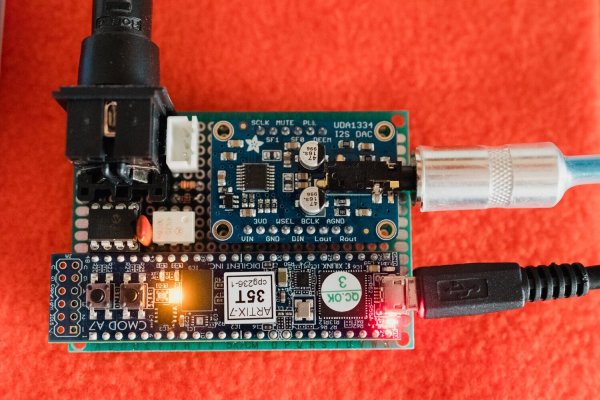[René Ceballos] contacted us about the new XFM2 FM synthesizer board, successor to the XFM that we covered on Hackaday last year. In addition to changing FPGAs from a Spartan 6 to an Artix-7 35, the DAC was also upgraded from 16 to 24 bits. Since the project is based around two easily available boards for the FPGA and DAC functionality, it is something that should be easy for anyone to recreate.
The project consists of a lower board that features the opto-isolated MIDI-input port, a 24LC1025 EEPROM, and a few passives, on top of which are mounted the Adafruit UDA1334A-based I2S decoder board and a Digilent Cmod A7-35T, containing the Xilinx XC7A35T-1CPG236C Artix-7 FPGA. [René] has made a schematic and BOM available on the XFM2 page. Total part cost should be about $99.
A user manual, installation guide, and the binaries that have to be loaded into the FPGA – using the provided instructions – are all made available. Unfortunately no HDL source is provided, but that shouldn’t take away from the fun of assembling an FM synthesizer board like this.
[René ] said that based on the feedback to the XFM project, he is now working on a visual user interface for the board. Once this is all working and depending on the feedback from XFM2 users, he may decide to start a crowdfunding campaign.













